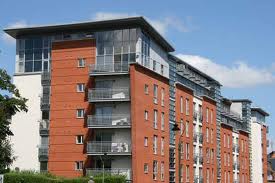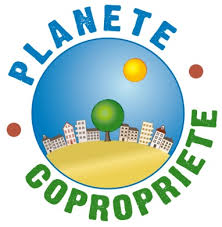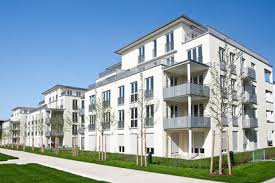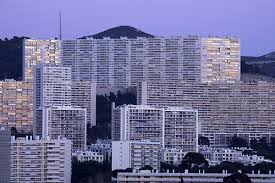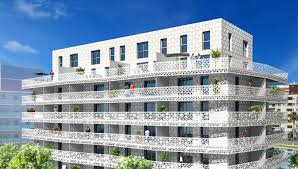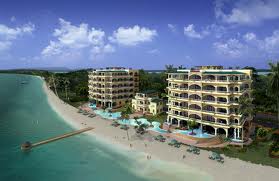ENERGY EFFICIENCY PLANS IN FRENCH CONDOMINIUMS
Cet article écris en langue anglaise est la somme des recherches faites par PLANETE COPROPRIETE.COM qui est un des correspondants habituels de ECOCOCOPRO.COM. Il décrit les freins et accélérateurs des rénovations énergétiques des copropriétés françaises.
Condominiums are struggling to organize and plan their major maintenance works.
The works are often presented in general assembly when they become essential and are managed as an urgent expense notwell prepared.
Chronic lack of information:
It is often during the works projects that the owner becomes aware of the existence of problems, and even those who need short-term work.
The Notary, on the acquisition of the property receives in France a copy of the maintenance log that traces if it is well maintained, the work done, as well as informations on current expenses and work undertaken predictable on 3 years.
This short-sighted view does not seem consistent with its commitment to credit will constrain its budget, perhaps for a period of 20 years.
Each year at the Annual General Meeting owners xill avoid repairs of the ravages of time, but will not be aware of the overall wear of all areas which have yet to trickle over on long term.
The manager has the obligation to submit to the General Assembly the creation of a fund called RESERVE FUND FOR FUTURE WORK.
But how well determine the elements of this plan often rejected by the owners because of lack of informations and explanations ?
This is particularly unfortunate because these plans could be a good foundation in order to precisely determine work energy savings which must be realized after a french legal energetic audit in 50 lots condominiums equipped with a central heating (or Energy Performance Certificate in condominiums with fewer than 50 lots).
These energetic audits must absolutely be well made :
It is is absolutely essential for the understanding of the co-owners in order to determine what to do.
The french Association PLANETE COPROPRIETE suggests:
A Review of Initial Condo (BIC), which is free (!), followed by a Global Shared Audit ( AGP) (see our articles on this subject in this web site).
The building will also benefit from the energetic and environmental labels that will give him (as well as apartments) a green heritage value because the label is very appreciated by potential buyers …It is not any more a luxury…
Condominium can provide multi-year plans of works : 5, 10, 15 or 20 years to « smooth » the works that will be carried out according to the particularity of the building, and its « life cycle « .
USA and CANADA have great specialists of the study and the preparation of depreciation schedules work based on the capacity building.
They are accustomed to « inspections » in buildings every 5 years.
These evaluations performed by « Inspectors » highly qualified allow the development of financing plans for voting special condo funds for example inQUEBEC (but also in Holland, Spain, Florida, Ontario …).
How to bridge the information gap?
The « action research », winner of PUCA / ANAH, produced by PLANETE COPROPRIETE helped to introduce and test a method to fill this information gap.
This »Action research » was conducted on behalf of PUCA( Urban Planning and Architecture Plan, Ministry of Housing) and ANAH: (National Agency for Housing Improvement)
Team Composition was members from PLANETE COPROPRIETE.
It consists of an inventory, analyze component wear and to develop an array of predictive maintenance management and accounting operations translate associated with maintaining capital assets and depreciation.
PLANETE COPROPRIETE is a cross-sectional association of professionals and condominiums specialists interested in improving energy condominiums.
Know what we are talking about the inventory :
The first task is to identify the areas, to identify and characterize the building (size, type) to create an inventory.
Through a single nomenclature, this inventory will be understood by all owners and professionals, and provide a language for defining common heritage.
It is therefore a document of understanding which should be delivered by the Notary in all lot sales condominiums !
The Notary should send it to the new owner even if it is not a legal obligation.
Analyze the value :
A simple way to assess the maintenance needs of a condominium is to give each of the components of the building (a facade, a boiler, an engine lift, …) a value equal to that estimated for refurbishment or replacement.
This value can be approximated from the maintenance log or estimated during the audit phase or diagnostics.
It is easy, by simple cumulation to obtain the approximate value of the common heritage.
The exercise performed on a 200 condominium lots in the town of Lyon showed that the estimated value of the common was € 6 millions for an aggregate market value of 200 apartments of 50 M €.
Predicting the life cycle and measure the wear :
The expected lifetime of each component of the building can be estimated (ex. 20 years for sealing).
It will be regularly refined during a five-year survey that will reassess the likely maturity replacement.
Let us recall that these inspections are very common in condominiums in North America …
Practicing a simple straight line (cost of refurbishment / life in years) gives the amount of the annual wear and component combination.
In the above example the amount of average annual is 200 K € (€ 6 million / 30 years), while the annual running costs budget is 410 k € nearly 50%!
It is interesting to compare the amount of average with the amount of maintenance base.
If the wear is greater, common sense would dictate that we shall call fund the difference and put aside a provision for future work.
Naturally, the approach allows to establish and report annually the net value (new value – wear) of the common heritage.
This is an excellent antidote against the postponement of work!
Well managed, building maintenance logic changes, it is not « who is paying this » but « what consumes pays » ,a temporal form of solidarity much more fair.
And in the process can be so voted by knowingly provident funds with multiannual plans of work to make it easier to finance needed by borrowing collective individual membership, and very efficient tool developed ,
and grants and subsidies from the State and local governments for energy savings to lower expenses and the new green value of the condominium.
Develop management planning table maintenance :
Reclassification of inventory table according to date of work each component for every 5 years, produced an array of predictive maintenance management.
This table distinguishes the work short-term (<5 years), medium term (between 5 and 10 years) and long term (between 10 and 20 years).
The short-term scheduling of work can then be organized in a consistent manner, either single program or multi-year plan, according to the priorities and constraints, and integrate the consideration of energy efficiency improvements and comfort.
Arrange financing, key to success :
The preparation of a single financing plan for the construction phase facilitates its acceptance by the voting community owners.
Use of the reserve fund, calculating the load remains after any grants and subsidies, and propose a collective loan whose duration will be determined by reference to the nature of work and repayment capacity (including reduce running costs by energy conservation).
A failure to anticipate funding upstream (reserve fund) logic renovation will be to group work and spread spending (borrowing).
Enter investment practices and accounting depreciation :
Mechanisms presented here as innovative condominiums rules are common practice for all other management entities (companies, administrations, housing units managed by social landlords, ..).
To put it in place, it is sufficient to apply it to the general accounting plan condominiums.
The work would not be considered as an investment and financing tool to cushion no longer a product but a matching own resources of the condominium.
Therefore a complete class 1 accounting for record fundraising work and see in an account « capital » the value of the condominium, resulting in maintenance of the common parts.
The inclusion of these resources will compensate recording class 2 capital (cost of work) and wear (depreciation).
Article written by Olivier BRANE, Honorary Lawyer (WWW.ECOCOPRO.COM), Administrateur de PLANETE COPROPRIETE ( www.planete-copropriete.com)
(with the help of COPRO+, Planete copropriete member)
Vous devriez aussi aimer
|
|
|





